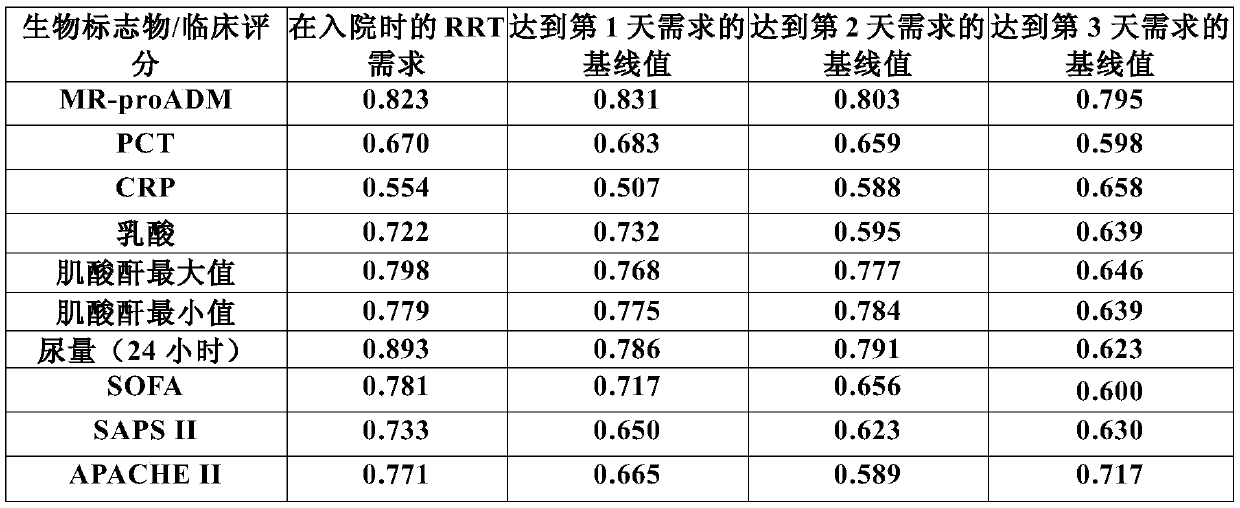Proadrenomedullin as indicator for renal replacement therapy in critically ill patients
An adrenomedullin and critical technology, applied in disease diagnosis, instrumentation, biomaterial analysis, etc., can solve problems such as shortage
- Summary
- Abstract
- Description
- Claims
- Application Information
AI Technical Summary
Problems solved by technology
Method used
Image
Examples
Embodiment
[0092] The examples have been carried out by detecting MR-proADM. However, as outlined above, the present invention can also be performed by detecting proADM or additional peptide fragments thereof.
[0093] Research design
[0094]A total of 1089 intensive care unit (ICU) patients were recruited into the study, of which 142 (13.0%) had severe sepsis and 947 (87.0%) had septic shock. The 28-day mortality rate was 26.9% and the hospital mortality rate was 33.4%. 321 (29.8%) patients required renal replacement therapy (RRT) within the first 28 days of ICU treatment, with the vast majority (N = 296; 92.2%) requiring RRT for the first time within the first 7 days of treatment
[0095] - Baseline: 178 (16.6%)
[0096] - Day 1: 59 (6.7%)
[0097] - Day 2: 25 (3.2%)
[0098] - Day 3: 11 (1.6%)
[0099] A trend of increased 28-day or 90-day mortality based on the time of initiation of RRT was found:
[0100] - 28-day and 90-day mortality at baseline: 52.2% and 63.2%;
[0101]...
PUM
 Login to View More
Login to View More Abstract
Description
Claims
Application Information
 Login to View More
Login to View More - R&D
- Intellectual Property
- Life Sciences
- Materials
- Tech Scout
- Unparalleled Data Quality
- Higher Quality Content
- 60% Fewer Hallucinations
Browse by: Latest US Patents, China's latest patents, Technical Efficacy Thesaurus, Application Domain, Technology Topic, Popular Technical Reports.
© 2025 PatSnap. All rights reserved.Legal|Privacy policy|Modern Slavery Act Transparency Statement|Sitemap|About US| Contact US: help@patsnap.com


